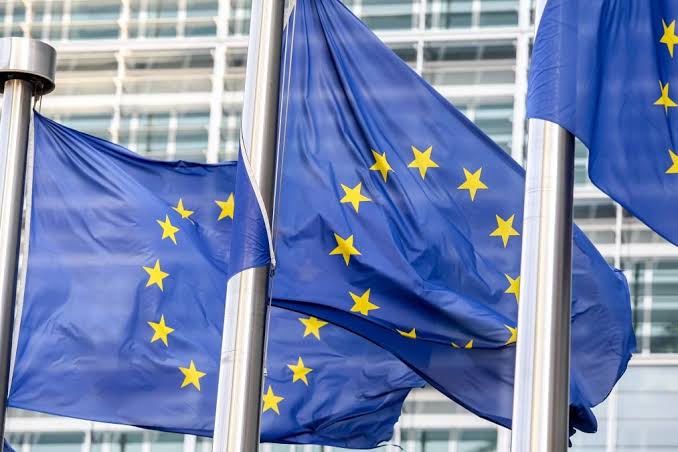The first phase of the historic, all-encompassing law controlling digital assets by the European Union will go into force on Sunday. Europe has succeeded in providing legal and regulatory certainty for the entire digital asset market—rather than just a portion of it—with the Markets in Crypto-Asset Regulation framework, something that other countries, including the U.S., are still avoiding. The last five years have been characterized by coordinated policy development throughout Europe, either as a result of worries over unrestrained cryptocurrency or as a result of the threat of Big Tech, such as Meta’s Diem (formerly Libra) plan, entering financial markets. MiCA will have a significant impact on creating a long-lasting, distinctly European bridge between digital assets and the real economy.
An eye-watering and recurrent boom-bust cycle typified much of the cryptocurrency sector in its first ten years, which in many respects made this a distinctly American market. Because of this, the US dollar serves as both the reserve currency of internet finance and the pricing benchmark for digital assets, much like it does in the real world. Stablecoins have steadily increased in value, to the point where they now exceed $150 billion. By offering euro-denominated stablecoins, which will be categorized as e-money tokens under the EU’s new regulations, a shot at success and a market of 441 million consumers, MiCA seeks to remedy this.
There is some protectionist element to MiCA, aimed at defending European investors and consumers against fraud and other dangers that have beset the rapidly developing cryptocurrency markets, but there is also some economic and technological sovereignty at stake. The way that offshore stablecoins, sometimes known as global stablecoins in diplomatic parlance, are prohibited by MiCA is the clearest example of this. Stablecoins that are linked to other currencies are generally required to abide by European e-money licensing standards, which include following prudential, financial crime compliance, and other regulations. The stablecoin issuer needs to have a second license if it provides other crypto asset services. Depending on the country, this license will be for virtual asset service provider (VASP), crypto asset service provider (CASP), or digital asset service provider (DASP).A minimum standard of compliance for the safekeeping of digital assets is this requirement. Apart from these license prerequisites, the days of vague cryptocurrency businesses with little to no presence in the EU are long gone. In fact, MiCA addresses consumer and market protection as well as economic competitiveness and employment creation. Pan-European regulatory harmonization allows licensed entities to passport their operations across the federation by requiring them to have accountable “mind and management” in an EU jurisdiction. However, national-level regulators still have some work to do to guarantee that MiCA is implemented uniformly across the common market. Only the most committed actors are prepared for the significant shift that MiCA represents for the cryptocurrency market and its existential relationship with the banking sector.For instance, MiCA denotes a hypothetical fiscal cliff where unregulated or non-compliant tokens may eventually be delisted or have their access severely restricted by cryptocurrency exchanges in the resurgent stablecoin category, where the dollar is the unit of account. It’s easy to understand why. Stablecoins are no longer treated like a niche financial instrument or like a poker chip in a cryptocurrency casino; instead, MiCA aligns stablecoins with established guidelines for electronic money. The regulations governing e-money tokens must thus be adhered to by any stablecoins that EU cryptocurrency exchanges sell.In the connected digital asset value chain, which runs from the wallet to the exchange to the issuer, this gives the token holder the opportunity to redeem the token directly from the issuer at par for the underlying currency. This strengthens collective accountability and consumer protection. Compare this approach to the vague regulations or absence of prudential safeguards preventing the run on the stable-only coin Terra Luna. Customers may have been better protected from the crash if Terra Luna had complied with state money transmission laws, which are the equivalent of e-money in the United States.
A uniform regulatory floor will now be shared by all regulated stablecoins under the current EU model, which will promote competition and eventually increase fungibility and interoperability across the EU market. Like all new laws or extensive regulations, MiCA has flaws and is sometimes unduly prescriptive. In fact, EU policymakers are already thinking about MiCA 2.0, which would potentially address some of the regime’s shortcomings in relation to decentralized finance, non-fungible tokens (NFTs), and other areas. While MiCA has already provided clear guidelines for players in the European cryptocurrency market, on the other side of the Atlantic, a dearth of federal legislation or ineffective standards have allowed a sector to grow. Should a technology divide across the Atlantic deepen, or should the United States and its vital allies aim higher to share digital commons?
It is possible to envision a true “NAFTA for digital assets” in North America if US politicians adopt a competitive stance toward the EU in this area. Forming a transcontinental Western alliance for digital assets, however, would be a long-term solution that would uphold democratic ideals in these developing countries and consider how exponential technologies may influence the future. It’s time for the United States to take action and reclaim its position as the world leader in financial services innovation and regulation now that MiCA has been implemented globally

